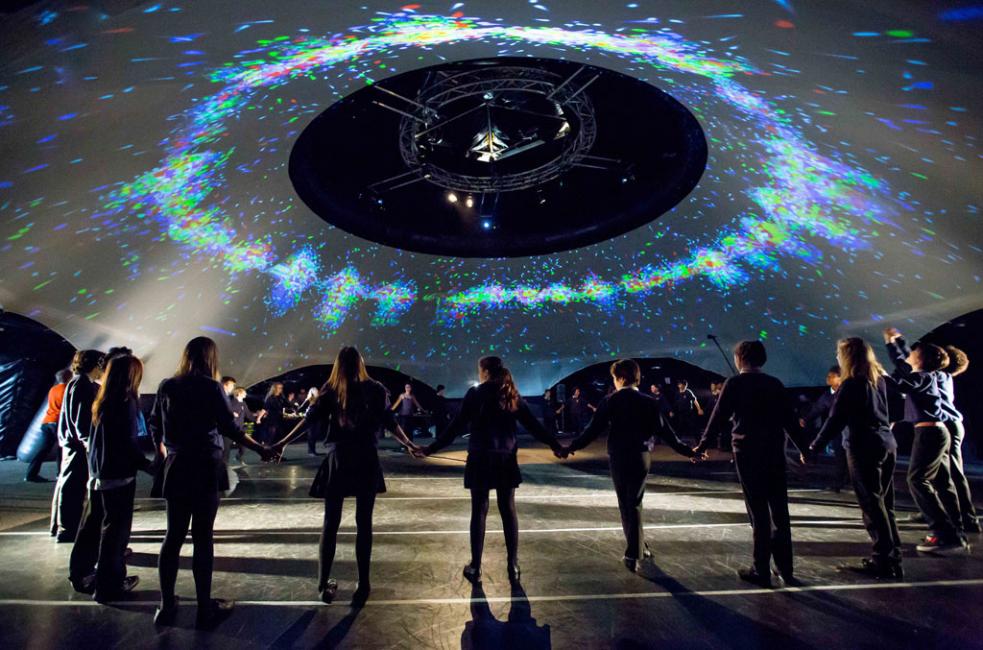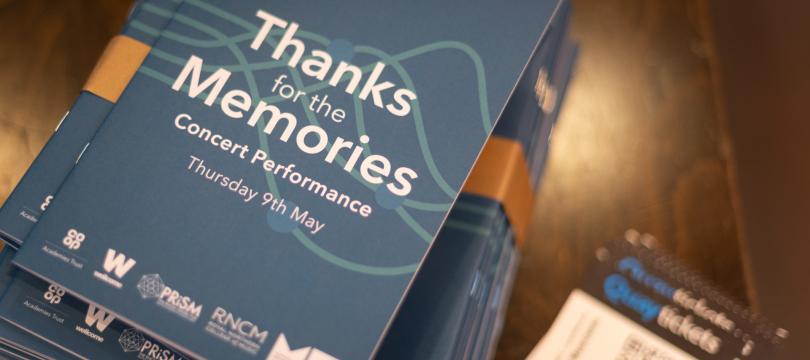For a more in-depth look at this case study, click on the headings below.
The project aims
To make cutting edge atomic and molecular research accessible by utilising new interactive techniques to provide a visual and sonic glimpse into the otherwise invisible atomic world. In turn dS enables participants to (i) appreciate the inherent beauty of the invisible atomic world; (ii) ask questions about how scientists understand this world; and (iii) have fun.
Target Audience
The general public, including patrons of art museums, science museums and school-age children. Beyond these demographics, dS aims to engage people with a wide range of backgrounds, spanning art, science, and technology.
How it started
The project was borne out of Dr David Glowacki’s (University of Bristol) frustration at trying to describe his work to friends and family. He wanted to find a way to convey his research, in a format that people would be able to engage with and appreciate. With the aim of presenting the simulations that he uses for his scientific research as an interactive work of art, Dr Glowacki brought together a number of artists, programmers and performers who together infused the original idea with their own ideas, skills and experience. The team included: Philip Tew (Pervasive Media Studio) who developed the visual components of the system; Professor Joseph Hyde (Bath Spa University) who composed the accompanying music and Dr Tom Mitchell (University of West of England) who created adaptive layers that connect the music with the simulation.
The piece really came to life when the project team began to think critically about how people would interact with piece. This led to working with professional dancers who really understood movement and could take the performance element of the project to another level. In taking dS into the field, new challenges have evolved for science to solve. For example, in order to perform the piece in a 360-degree projection dome at the Olympics in 2012, high-performance computing researchers at the University of Bristol helped to optimise the code so that it could be executed on a much larger scale. Therefore a project that began to explore different ways to express science to the general public, ended up solving new technological problems that led to further research in order to perform in different spaces. There were also a number of spin-offs, including schools workshops where the team would run educational sessions in which school children would be introduced to scientific concepts and invited to physically experiment with these ideas using dS. This evoked positive reactions from the children who were literally able to immerse themselves into some of the major theories behind atomic and molecular physics.
Partnerships, publicity and marketing
The project was borne out of Dr David Glowacki’s (University of Bristol) frustration at trying to describe his work to friends and family. He wanted to find a way to convey his research, in a format that people would be able to engage with and appreciate. With the aim of presenting the simulations that he uses for his scientific research as an interactive work of art, Dr Glowacki brought together a number of artists, programmers and performers who together infused the original idea with their own ideas, skills and experience. The team included: Philip Tew (Pervasive Media Studio) who developed the visual components of the system; Professor Joseph Hyde (Bath Spa University) who composed the accompanying music and Dr Tom Mitchell (University of West of England) who created adaptive layers that connect the music with the simulation.
The piece really came to life when the project team began to think critically about how people would interact with piece. This led to working with professional dancers who really understood movement and could take the performance element of the project to another level. In taking dS into the field, new challenges have evolved for science to solve. For example, in order to perform the piece in a 360-degree projection dome at the Olympics in 2012, high-performance computing researchers at the University of Bristol helped to optimise the code so that it could be executed on a much larger scale. Therefore a project that began to explore different ways to express science to the general public, ended up solving new technological problems that led to further research in order to perform in different spaces. There were also a number of spin-offs, including schools workshops where the team would run educational sessions in which school children would be introduced to scientific concepts and invited to physically experiment with these ideas using dS. This evoked positive reactions from the children who were literally able to immerse themselves into some of the major theories behind atomic and molecular physics.
Evaluation
A variety of techniques were used to evaluate the project. Examples include work-in-progress showings, where small groups including critical friends were invited to take part in pilots and provide feedback. Once the project was up and running the team developed a range of evaluation methods including surveys, interviews and observational studies in order to gauge and document people's reactions to the project. Feedback was used formatively to revise elements of the performance, installation or workshops. Audience feedback gathered by interview and survey has shown that dS reached out to non-traditional audiences, inspiring curiosity in people who otherwise feel intimidated by science. Recorded statistics indicate that dS has reached over 100,000 people spanning all ages, offering them a special glimpse into the invisible microscopic dynamics that govern all the matter in the universe.
Key to making it work
Throughout the development process dS would go through fast, experimental cycles, exploring new visual, sonic, and choreographic ideas. Fundamental to the success of the project was the maintenance of open channels of communication between contributors at all stages. An additional factor was the scientific curiosity exhibited by the artistic contributors and conversely the real enthusiasm that the scientists have for the arts. This resulted in a mutual respect within the team, which helped to create a cooperative and productive environment.
Key lessons learnt
The researchers on the project learnt that art is a powerful tool for communicating and immersing the public in complexity, as many artists and dancers are adept at working with abstract ideas and interpreting them for audiences.


